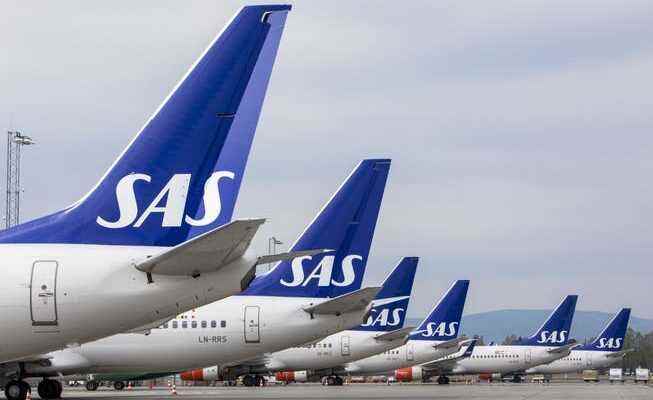The airline SAS has voluntarily applied for Chapter 11 bankruptcy protection in the USA in order to be able to implement a restructuring initiated in the spring more quickly. However, a pilots’ strike during the main summer travel season endangers the process.
In essence, the dispute between pilots and company management is a dispute over the Scandinavian working model.
“This is the sixth time in the last twelve years that the pilots have gone on strike. How are we going to get anyone to invest in our company if this continues?” said the CEO of Scandinavian airline SAS, Anko van der Werff, with a mixture of suppressed anger and open frustration, when he arrived just after noon on Monday the media entered. It was a high noon according to all the rules of the art: After two delays in order to bring ongoing talks to an amicable conclusion, if possible, the strike of around 900 pilots employed by the airline in Scandinavia began to walk out.
For thousands of travelers at airports in Denmark, Sweden and Norway, this meant the end of their holiday plans. “Cancelled” was shown on the display panel for many flights with the abbreviation SK. The general desire to travel is great, for the financially stricken SAS it would have been an opportunity to refill the coffers a bit. Now, however, the future looks even bleaker than before.
Deep ditch between management and pilots
Management’s response was immediate: on Tuesday announced SASto voluntarily seek Chapter 11 bankruptcy protection in the United States. It is a supervised bankruptcy that allows the company to recover while continuing to operate. The SAS management had already had this option in mind, but it could have been taken more quickly by the pilots’ strike.
With the legal instruments offered by the Chapter 11 process, the necessary transformation can now be carried out more efficiently and help to make SAS a stronger company, said van der Werff. He called on the pilots to end their strike and to help with the conversion.
The problem, however, is that there is a big discrepancy in the world view between pilots and management. A major bone of contention in the dispute concerns the reinstatement of most of the pilots who were laid off during the pandemic. The pilots’ unions of Denmark, Sweden and Norway insist that this is done under the terms of the original contract and under the parent company.
But management would prefer to employ pilots through two subsidiaries where conditions are less stringent. This is part of the cost reduction plan. The pilots organized in the Nordic unions, however, believe that these subsidiaries are just a kind of letterbox companies to circumvent the provisions of labor law. No union in the world could put up with something like that.
“A matter of principle”
In essence, the dispute between pilots and company management is therefore a dispute over the Scandinavian working model with the many safeguards that this offers employees. The pilots made that clear.
A few days ago, a representative of the Norwegian pilots’ association threatened that if SAS did not commit to the Scandinavian model, they would be ready to bankrupt the company, because then it would no longer deserve a place on the Nordic job market. The company’s head of communications, Karin Nyman, described this as a “completely absurd statement” that displayed a shocking nonchalance. CEO van der Werff stepped up after the strike began and saidthe pilots apparently did not understand the situation the airline was in.
The Swedish pilots’ union also underlined the importance of the Scandinavian working model. Martin Lindgren, head of the union’s SAS section, dismissed claims that the pilots were uncooperative. They gave in several times, but each time the management simply increased its demands even more. They were literally pushed into this strike.
The sound shows that the positions are far apart and that fundamentals are at stake. Both sides play poker with high stakes. The situation is further complicated by the fact that the collective agreement expired in the spring and there is still no new one.
Tough competition
The fundamental question that arises, however, is whether a company with the structure of SAS can still afford the Nordic working model at all. As a network airline offering short, medium and long-haul routes, it competes with cheaper airlines in Scandinavian and European traffic, which are either based in countries with less strict labor market conditions or have relocated part of their business there via subsidiaries.
Norwegian, a strong competitor in the Nordic market, operates in this way. In addition, the airline already completed its resizing during the pandemic and restricted it to European business. Since June she has one too new collective agreement with the pilotswhich according to its own statements gives it the necessary flexibility for the current situation.
Meanwhile, the SAS pilots’ strike has grounded up to 250 planes and disrupted the travel plans of around 30,000 passengers every day. Around half of the flights that SAS normally offers through the parent company and subsidiaries and partners have been canceled. The group still has liquid funds of about 700 million dollars; the operation is not directly endangered. But instead of selling tickets and raising money, there are now refunds for canceled trips, costs for rebooking and a loss of confidence among customers and potential investors. According to analysts, if the pilots’ strike continues, the abyss could soon approach.
